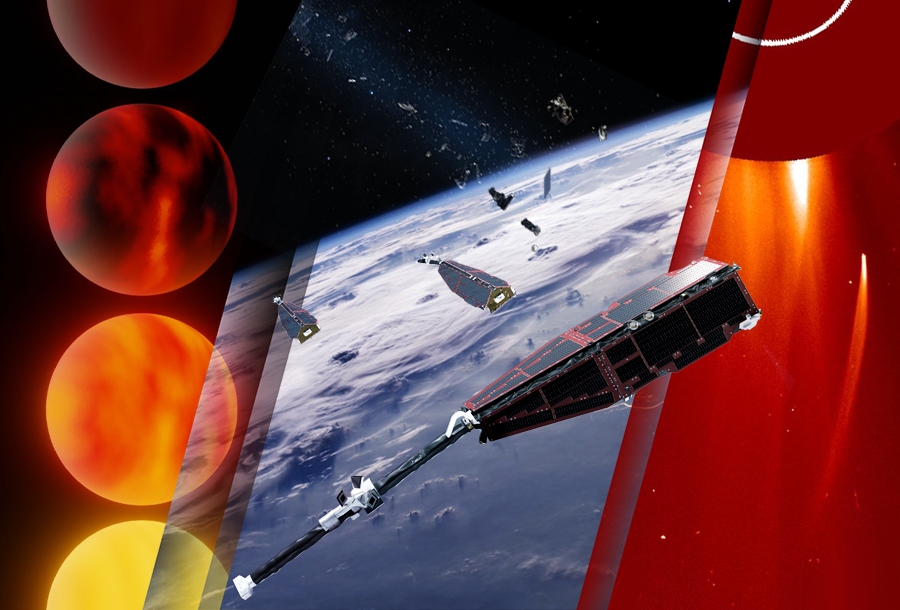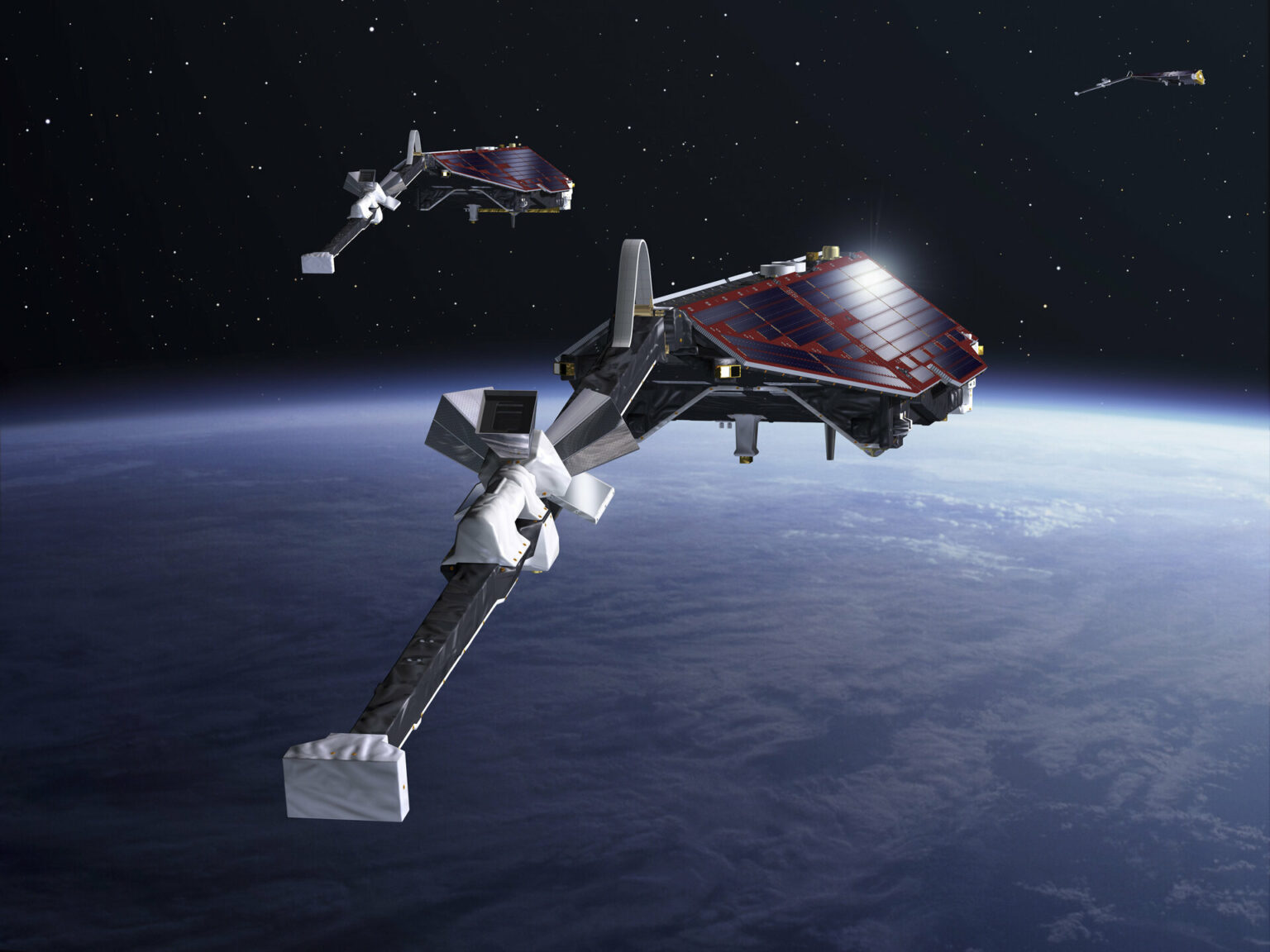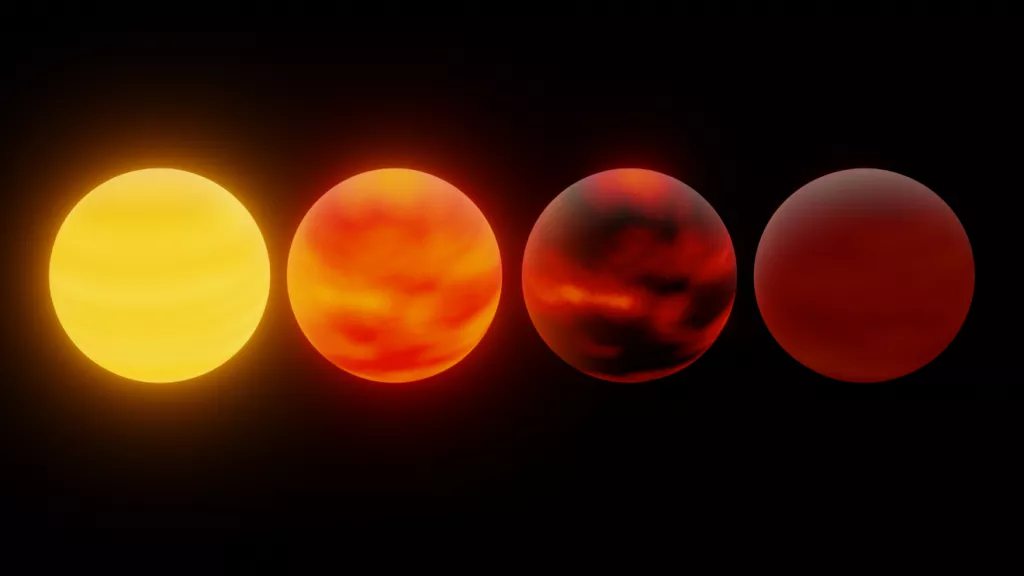Selection of the most interesting space news for breakfast: The brightest comet of the Solar system will fly past the Earth. Skyrora will open the largest production of rocket engines in the UK, and we are talking about the TRAPPIST-1 planetary system.

- SOHO showed the death of a near-solar comet
- NASA and Roscosmos nearing completion of seat barter agreement
- ESA satellite dodged space debris
- China prepares for launch of second space station module
- Skyrora opens UK’s largest rocket engine manufacturing facility
- NASA’s Spitzer Space Telescope recorded a special sandstorm
- The brightest comet of the Solar System will fly past Earth this week
- TRAPPIST-1. Hot worlds of a cold dwarf
SOHO showed the death of a near-solar comet
The presented animation was received on July 13 by the SOHO Space Observatory. It demonstrates the death of a near-solar comet of the Kreutz family. An icy object with a diameter of several tens of meters passed at a distance of only 200 thousand km from the solar surface (this is half the distance between the Earth and the Moon) and completely evaporated.
NASA and Roscosmos nearing completion of seat barter agreement
NASA and Roscosmos are in the final stages of completing a long-awaited agreement to allow Russian cosmonauts to fly on commercial crew vehicles and American astronauts on Soyuz spacecraft. At a briefing about the upcoming launch of a SpaceX cargo Dragon spacecraft to the International Space Station, said Dana Weigel, NASA ISS deputy program manager.
Market News

ESA satellite dodged space debris
One of the satellites of the Swarm mission dodged a fragment of space debris just a few hours before the collision. This is stated in a message published on the website of the European Space Agency (ESA). The Swarm mission consists of three spacecraft launched in 2013. They are designed to study the Earth’s magnetic field. Two spacecraft (Swarm A and Swarm C) are moving almost “side by side” in the same orbit. Initially, its height was 460 km, but later it was reduced to 300 km. The third spacecraft is in a higher 530-kilometer orbit.
China prepares for launch of second space station module
China is gearing up to send a second module to its under-construction space station with a launch from the coastal Wenchang spaceport later this month. A Long March 5B heavy-lift rocket will launch the roughly 22-ton Wentian experiment module July 24.
The 53.7-meter-long, 837.5 metric ton rocket will be rolled out to the pad at Wenchang in the coming days. The new module has a length of 17.9 meters and a maximum diameter of 4.2 meters. It features crew quarters and an airlock cabin which will become the main exit-entry point for extravehicular activities (EVAs) once active, replacing the role now played by the Tianhe docking hub.
Skyrora opens UK’s largest rocket engine manufacturing facility
UK rocket company Skyrora has taken another important stride towards achieving a sovereign orbital launch from British soil by opening a new manufacturing and production facility, the largest of its kind in the UK. After recently opening its engine test facility in Midlothian, this new facility in Cumbernauld allows the company to concentrate its launch development practices in custom-built domestic facilities.
Interesting

NASA’s Spitzer Space Telescope recorded a special sandstorm
Sandy or (silicate-rich) clouds were confirmed in bizarre, gassy objects known as brown dwarfs. Since these oddball objects have no solid surface, how the sand grains got so high in their planets’ atmospheres was a mystery to scientists.
However, the researchers made a discovery based on archival observations of the retired Spitzer Space Telescope. Using these data, they found out that the conditions necessary for the formation of sand clouds can occur at a certain temperature range and chemical composition.
The brightest comet of the Solar System will fly past Earth this week
A comet that has fascinated scientists for five years approaches its closest distance from Earth this week. There is a chance to see comet C/2017 K2 PANSTARRS, also called K2, on Wednesday or Thursday, when it makes its last flyby through the Solar System.
TRAPPIST-1. Hot worlds of a cold dwarf
The TRAPPIST-1 planetary system consists of a red dwarf and seven planets orbiting it. Three of them could theoretically be suitable for life. This article is the first in a serieswhere we will talk about what is now known about the planets of this unusual system.
Follow us on Twitter to get the most interesting space news in time
https://twitter.com/ust_magazine
